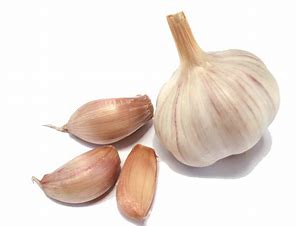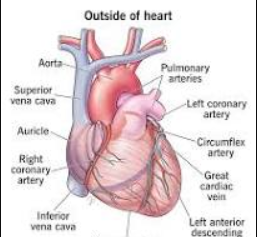
Learn essential tips on how can you keep your heart healthy through diet, exercise, stress management, and regular health check-ups.
What is a human heart?

The human heart is a muscular organ that functions as the central component of the circulatory system.
It is responsible for pumping blood throughout the body, providing oxygen and nutrients to various tissues and organs while removing waste products.
Here are some key characteristics and functions of the human heart:
Location:
The human heart is located in the chest, slightly to the left of the center, and it is protected by the ribcage.
Size and Shape:
The heart is roughly the size of a closed fist and has a conical shape.
It is composed of four chambers:
Two atria (upper chambers) and two ventricles (lower chambers).
Circulatory System:
The heart is a vital component of the circulatory system, which includes blood vessels (arteries, veins, and capillaries) that transport blood to and from the heart.
Blood Flow:
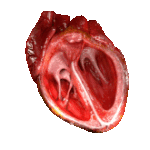
Blood flows through the heart in a specific sequence:
Deoxygenated blood returns from the body to the right atrium via two large veins, the superior vena cava and inferior vena cava.
The right atrium contracts and pushes the blood into the right ventricle.
The right ventricle pumps the deoxygenated blood to the lungs through the pulmonary arteries for oxygenation.
Oxygenated blood returns from the lungs to the left atrium via the pulmonary veins.
The left atrium contracts and pushes the oxygenated blood into the left ventricle.
The left ventricle is responsible for pumping oxygenated blood to the rest of the body through the aorta, the largest artery.
Valves:
The heart has four valves that ensure one-way blood flow.
These valves include the tricuspid valve, the mitral valve (atrioventricular valves), and the pulmonary valve and aortic valve (semilunar valves).
Muscle and Contraction:
The heart muscle, known as cardiac muscle or myocardium, contracts rhythmically and involuntarily to pump blood.
The coordinated contraction of the atria and ventricles ensures efficient circulation.
Electrical System:
The heart has its electrical system, which regulates the heartbeat.
The sinoatrial (SA) node initiates electrical impulses, which travel through the atria, causing them to contract.
The impulses then pass through the atrioventricular (AV) node to the ventricles, causing them to contract as well.
Heart Rate:
The rate at which the heart beats is known as the heart rate.
It can vary depending on factors such as physical activity, emotions, and overall health.
The human heart is a vital organ essential for maintaining life.
Any disruptions in its function can have serious consequences for overall health.
Various heart conditions, such as coronary artery disease, arrhythmias, and heart failure, can impact the heart’s ability to pump blood effectively and may require medical intervention.
What is the function of the human heart?
The human heart performs the crucial function of pumping blood throughout the body, serving as the central organ of the circulatory system.
Its primary functions include:
Pumping Blood:
The heart acts as a muscular pump that propels blood to circulate throughout the entire body.
It ensures a continuous flow of blood, delivering oxygen, nutrients, and hormones to various tissues and organs while removing waste products, including carbon dioxide and metabolic byproducts.
Oxygenation:
The heart facilitates the oxygenation of blood. Deoxygenated blood returns to the heart from the body, enters the right atrium, and is then pumped into the lungs by the right ventricle.
In the lungs, the blood picks up oxygen and releases carbon dioxide.
Oxygenated blood returns to the left atrium and is pumped into the systemic circulation by the left ventricle, delivering oxygen to all body cells.
Nutrient Delivery:
The heart ensures the distribution of essential nutrients, such as glucose and fatty acids, to cells for energy production and metabolic processes.
Waste Removal:
By circulating through the liver and kidneys, blood helps eliminate waste products and toxins from the body.
Hormone Transport:
Hormones produced by endocrine glands are transported by the blood to their target tissues and organs, allowing for communication and regulation of various physiological processes.
Temperature Regulation:
Blood circulation helps regulate body temperature, redistributing heat generated by metabolic processes and maintaining a stable internal temperature.
Immune Response:
The circulatory system carries immune cells and antibodies to sites of infection or injury, aiding the body’s immune response.
pH and Electrolyte Balance:
Blood helps maintain the body’s pH level and electrolyte balance, ensuring that bodily fluids remain within a narrow range for optimal cellular function.
Blood Pressure Regulation:
The heart, in conjunction with the blood vessels, regulates blood pressure by adjusting the force of blood flow.
Blood pressure is essential for efficient circulation and the delivery of oxygen and nutrients to tissues.
The heart accomplishes these functions through its coordinated contractions, with the atria contracting first to fill the ventricles with blood, followed by the ventricles contracting to pump blood into the arteries.
This rhythmic pumping action is controlled by electrical impulses generated within the heart’s own electrical system, ensuring the heart’s continuous and coordinated operation.
Any disruptions or abnormalities in the heart’s function can have serious consequences for overall health and may lead to various cardiovascular conditions.
What are human heart diseases?
Human heart diseases, collectively known as cardiovascular diseases (CVDs), refer to a group of medical conditions that affect the heart and blood vessels.
These diseases can range from relatively mild conditions to life-threatening emergencies.
Some of the most common heart diseases and conditions include:
Coronary Artery Disease (CAD):
CAD is the most common type of heart disease.
It occurs when the coronary arteries, which supply blood to the heart muscle, become narrowed or blocked due to the buildup of plaque (atherosclerosis).
This can lead to chest pain (angina) or a heart attack (myocardial infarction).
Heart Attack (Myocardial Infarction):
A heart attack occurs when a coronary artery is suddenly blocked, typically by a blood clot.
This results in a lack of blood supply to a portion of the heart muscle, causing tissue damage or death.
Heart Failure:
Heart failure is a condition in which the heart is unable to pump blood effectively to meet the body’s needs.
It can result from various underlying causes, including CAD, high blood pressure, or certain heart valve disorders.
Arrhythmias:
Arrhythmias are abnormal heart rhythms.
They can include tachycardia (fast heart rate), bradycardia (slow heart rate), atrial fibrillation (irregular and rapid heartbeat), and ventricular fibrillation (a life-threatening arrhythmia).
Arrhythmias can disrupt the heart’s pumping function and lead to serious complications.
Heart Valve Disorders:
Heart valve disorders involve problems with the heart’s valves, which control the flow of blood through the heart.
Conditions include valve stenosis (narrowing), valve regurgitation (leaking), and valve prolapse.
Cardiomyopathy:
Cardiomyopathy is a disease of the heart muscle, leading to an enlarged, thickened, or weakened heart.
It can result from various causes, including genetic factors, infections, or certain medications.
Hypertension (High Blood Pressure):
Hypertension is a common condition in which the force of blood against the walls of the arteries is consistently too high.
Over time, this can lead to damage to the blood vessels and increase the risk of heart disease.
Peripheral Artery Disease (PAD):
PAD involves the narrowing of arteries outside the heart, typically in the legs.
It can cause symptoms such as leg pain and cramping during physical activity.
Congenital Heart Defects:
Some individuals are born with structural abnormalities of the heart and blood vessels, known as congenital heart defects.
These can range from minor issues to complex, life-threatening conditions.
Stroke:
Although not a heart disease, stroke is closely related to cardiovascular health.
Ischemic strokes occur when a blood clot blocks an artery supplying the brain, often due to emboli originating from the heart in conditions like atrial fibrillation.
Preventing and managing heart diseases often involves lifestyle changes, medications, surgical interventions (such as angioplasty or bypass surgery), and cardiac rehabilitation.
Early detection and treatment are essential for reducing the risk of complications and improving outcomes in individuals with heart diseases.
Regular medical check-ups, a healthy diet, exercise, and risk factor management are important strategies for maintaining heart health.
How can we keep the human heart healthy?
Maintaining a healthy heart is crucial for overall well-being and longevity.
To keep your heart healthy, consider adopting the following lifestyle habits and strategies:
Eat a Heart-Healthy Diet:
Consume a balanced diet rich in fruits, vegetables, whole grains, lean proteins (such as poultry, fish, beans, and tofu), and healthy fats (like those found in nuts, seeds, and olive oil).
Limit saturated and trans fats, as well as cholesterol. Avoid or minimize processed foods, fried foods, and excessive intake of red meat.
Control portion sizes to manage calorie intake and maintain a healthy weight.
Reduce sodium (salt) intake to help manage blood pressure.
Exercise Regularly:
Engage in regular physical activity, aiming for at least 150 minutes of moderate-intensity aerobic exercise or 75 minutes of vigorous-intensity aerobic exercise per week.
Include strength training exercises at least two days a week to build muscle and boost metabolism.
Stay active throughout the day by taking short breaks from sitting and incorporating movement into your routine.
Maintain a Healthy Weight:
Achieve and maintain a healthy weight through a combination of diet and exercise.
Excess weight, especially around the abdomen, can increase the risk of heart disease.
Don’t Smoke:

If you smoke, quit. Smoking is a major risk factor for heart disease. Seek support and resources to help you quit smoking.
Limit Alcohol Intake:
If you drink alcohol, do so in moderation. For most adults, this means up to one drink per day for women and up to two drinks per day for men.
Excessive alcohol consumption can contribute to high blood pressure and other heart-related issues.
Manage Stress:
Chronic stress can negatively affect heart health. Practice stress-reduction techniques such as deep breathing, meditation, yoga, or spending time in nature.
Find healthy ways to cope with stress and prioritize self-care.
Get Adequate Sleep:
Aim for 7-9 hours of quality sleep per night. Poor sleep can increase the risk of heart disease.
Establish a consistent sleep schedule and create a sleep-friendly environment.
Control Blood Pressure:
Regularly monitor your blood pressure and work with your healthcare provider to manage it within a healthy range.
Lifestyle changes, including diet, exercise, and stress management, can help control blood pressure.
Manage Cholesterol Levels:
Monitor your cholesterol levels, especially LDL (“bad”) cholesterol.
High cholesterol can contribute to atherosclerosis and heart disease.
If needed, work with your healthcare provider to develop a plan for managing cholesterol through lifestyle changes and, if necessary, medication.
Stay Hydrated:
Drink an adequate amount of water throughout the day to support overall health and help maintain heart health.
Regular Check-ups:
Visit your healthcare provider for regular check-ups and screenings to monitor your heart health and address any potential issues early.
Remember that genetics can also play a role in heart health, so it’s important to be proactive in making healthy lifestyle choices to reduce your risk of heart disease.
Always consult with a healthcare professional for personalized advice and recommendations based on your individual health status.
What are the home remedies to keep the human heart healthy?
While maintaining a healthy heart primarily involves lifestyle choices and medical guidance, there are several home remedies and natural approaches that can complement a heart-healthy lifestyle.
These remedies can help support overall cardiovascular health:
Garlic:
Garlic has been associated with potential cardiovascular benefits, including lowering blood pressure and cholesterol levels.
You can incorporate fresh garlic into your cooking or take garlic supplements after consulting with a healthcare professional.
Omega-3 Fatty Acids:


Foods rich in omega-3 fatty acids, such as fatty fish (salmon, mackerel, sardines), flaxseeds, chia seeds, and walnuts, may help reduce the risk of heart disease. Consider adding these foods to your diet.
Hibiscus Tea:
Some studies suggest that hibiscus tea may help lower blood pressure.
Drinking hibiscus tea regularly may have a mild antihypertensive effect, but consult with a healthcare provider if you have blood pressure concerns.
Green Tea:
Green tea is rich in antioxidants called catechins, which may support heart health by improving cholesterol levels and reducing inflammation.
Drinking green tea in moderation can be beneficial.
Turmeric:
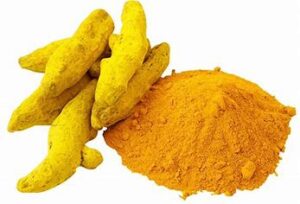
Curcumin, the active compound in turmeric, has anti-inflammatory and antioxidant properties that may benefit heart health.
You can add turmeric to your cooking or consider turmeric supplements after consulting a healthcare provider.
Ginger:
Ginger may help lower blood pressure and reduce inflammation.
You can incorporate fresh ginger into your meals or make ginger tea.
Cayenne Pepper:
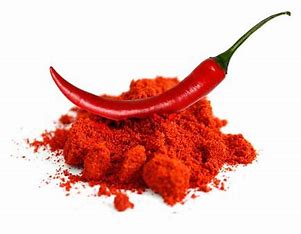
Capsaicin, the compound that gives cayenne pepper its heat, may help lower blood pressure and improve circulation.
Use cayenne pepper in your cooking or as a spice.
Oatmeal:
Oats are a good source of soluble fiber, which can help lower LDL (“bad”) cholesterol levels.
Start your day with a bowl of oatmeal topped with berries and nuts for added heart benefits.
Nuts:
Almonds, walnuts, and other nuts are rich in healthy fats, fiber, and antioxidants.
Eating a handful of unsalted nuts as a snack can be heart-healthy.
Berries:
Berries like blueberries, strawberries, and raspberries are packed with antioxidants called flavonoids, which may help improve heart health.
Add them to your breakfast or eat them as a healthy snack.
Aloe Vera:

Some studies suggest that aloe vera may help lower cholesterol levels.
You can consume aloe vera gel in moderation after consulting with a healthcare provider.
Yoga and Meditation:
Engaging in regular yoga and meditation practices can help reduce stress, lower blood pressure, and improve overall heart health.
Deep Breathing Exercises:
Practicing deep breathing exercises can help reduce stress and promote relaxation, which can benefit heart health.
Try deep breathing techniques like diaphragmatic breathing or progressive muscle relaxation.
It’s important to note that while these home remedies may provide some cardiovascular benefits, they should not be relied upon as the sole means of managing heart health.
A well-rounded approach that includes a heart-healthy diet, regular exercise, stress management, and medical guidance when necessary is essential for maintaining optimal heart health.
Always consult with a healthcare professional before making significant changes to your diet or lifestyle, especially if you have preexisting heart conditions or concerns.
What are the exercises to keep the human heart healthy?
To keep the human heart healthy, it’s important to engage in regular physical activity and exercise.
A well-rounded exercise routine can help improve cardiovascular fitness, strengthen the heart muscle, lower blood pressure, and reduce the risk of heart disease.
Here are some types of exercises and activities that are beneficial for heart health:
Aerobic Exercise:
Aerobic or cardiovascular exercises increase your heart rate and breathing rate, improving your heart and lung function.
Examples include:
Brisk walking
Jogging or running
Cycling
Swimming
Dancing
Jumping rope
Aerobic classes (e.g., Zumba, step aerobics)
Strength Training:
Strength training exercises, also known as resistance or weight training, help build and maintain muscle mass, which can contribute to overall cardiovascular health. Muscle tissue burns calories, even at rest, which can aid in weight management.
Include exercises such as:
Weightlifting
Bodyweight exercises (e.g., push-ups, squats)
Resistance band exercises
Yoga and Pilates (which can also improve flexibility and balance)
Interval Training:
Interval training involves alternating between short bursts of high-intensity exercise and periods of lower-intensity or rest.
This can be an effective way to improve cardiovascular fitness and burn calories efficiently.
For example, you can alternate between 30 seconds of high-intensity sprints or jumping jacks and 60 seconds of walking or light jogging.
Circuit Training:
Circuit training combines strength training and aerobic exercises in a single workout. It involves moving through a series of exercises with minimal rest in between.
Create a circuit that includes exercises like push-ups, squats, lunges, and jumping jacks for a full-body workout.
Sports and Recreational Activities:
Engaging in sports and recreational activities you enjoy can be an effective way to stay physically active and maintain heart health.
Activities like tennis, basketball, soccer, and swimming can provide both cardiovascular and social benefits.
Walking:

Walking is a low-impact exercise that is accessible to most people.
It’s an excellent choice for those who are new to exercise or have joint concerns.
Aim for brisk walking to maximize cardiovascular benefits.
Swimming:
Swimming is a full-body workout that is gentle on the joints. It can help improve cardiovascular fitness, strength, and flexibility.
Hiking and Nature Walks:
Exploring nature through hiking and walking in natural settings not only provides exercise but also offers stress-reducing benefits, which can be good for heart health.
Stretching and Flexibility Exercises:
Stretching exercises, such as yoga and Pilates, can improve flexibility and reduce the risk of injury during other forms of exercise.
Stair Climbing:
Climbing stairs can be a vigorous cardiovascular workout that engages your leg muscles and elevates your heart rate.
It’s important to consult with a healthcare provider before beginning a new exercise program, especially if you have any preexisting medical conditions or concerns about your heart health.
They can guide the most appropriate and safe exercise regimen for your individual needs.
Aim for at least 150 minutes of moderate-intensity aerobic exercise or 75 minutes of vigorous-intensity aerobic exercise per week, along with strength training exercises at least two days a week, as recommended by health authorities.
Pomegranate.

That means fruits can help keep your arteries clear and protect your heart.
Many fruit juices have the same amount of antioxidants as green tea or red wine, but pomegranate juice has three times more antioxidants than green tea or red wine.
It’s thought that lowering low-density lipoprotein, or “bad” cholesterol, can protect the heart.
Folate(folic acid).
Eating foods with this nutrient may reduce your risk of heart disease and heart attack.
For example, you can eat dark leafy greens like spinach, lentils, lima beans, and asparagus.
According to the American Heart Association, folate-rich foods are the right way to go.
Blueberries.
When it comes to nutrition, blueberries are brilliant.
They have anthocyanins, which are blood vessel helpers.
The berries have a dark blue color.
Additionally, Blueberries have a lot of other great vitamins and minerals.
Adding fresh or dried blueberries to cereals, pancakes, or yogurt is possible.
You can add sweet sauce if you want to use it as a dip.
Tofu(bean curd made with soy milk).

Tofu is a fantastic vegetarian soybean with polyunsaturated fats, fiber, and minerals that are good for your heart.
It can flavor sauces when used in cooking.
After slicing the tofu, apply oil directly while grilling, marinate, and then grill or stir-fry.
You can add tofu to low-fat soups.

